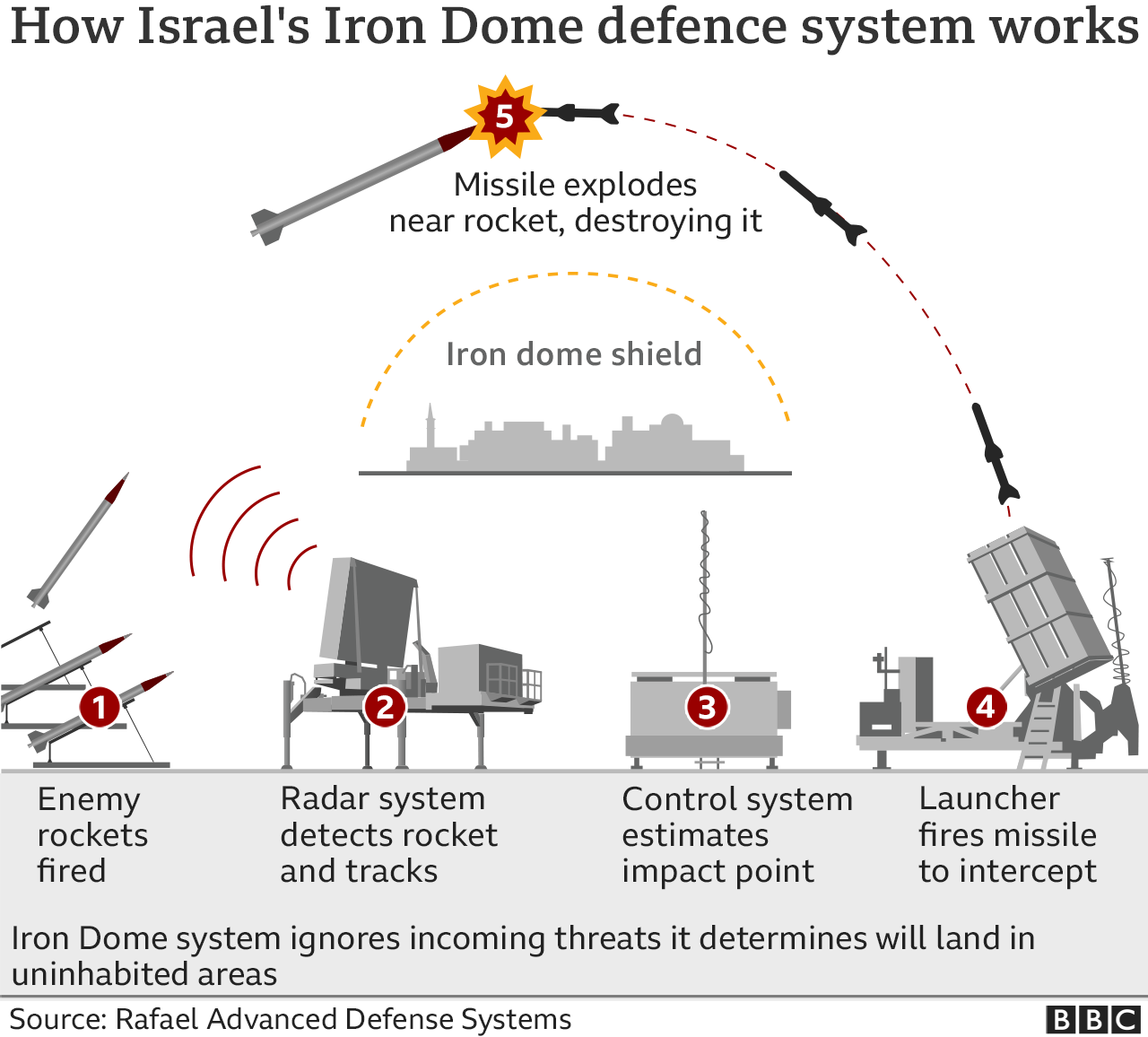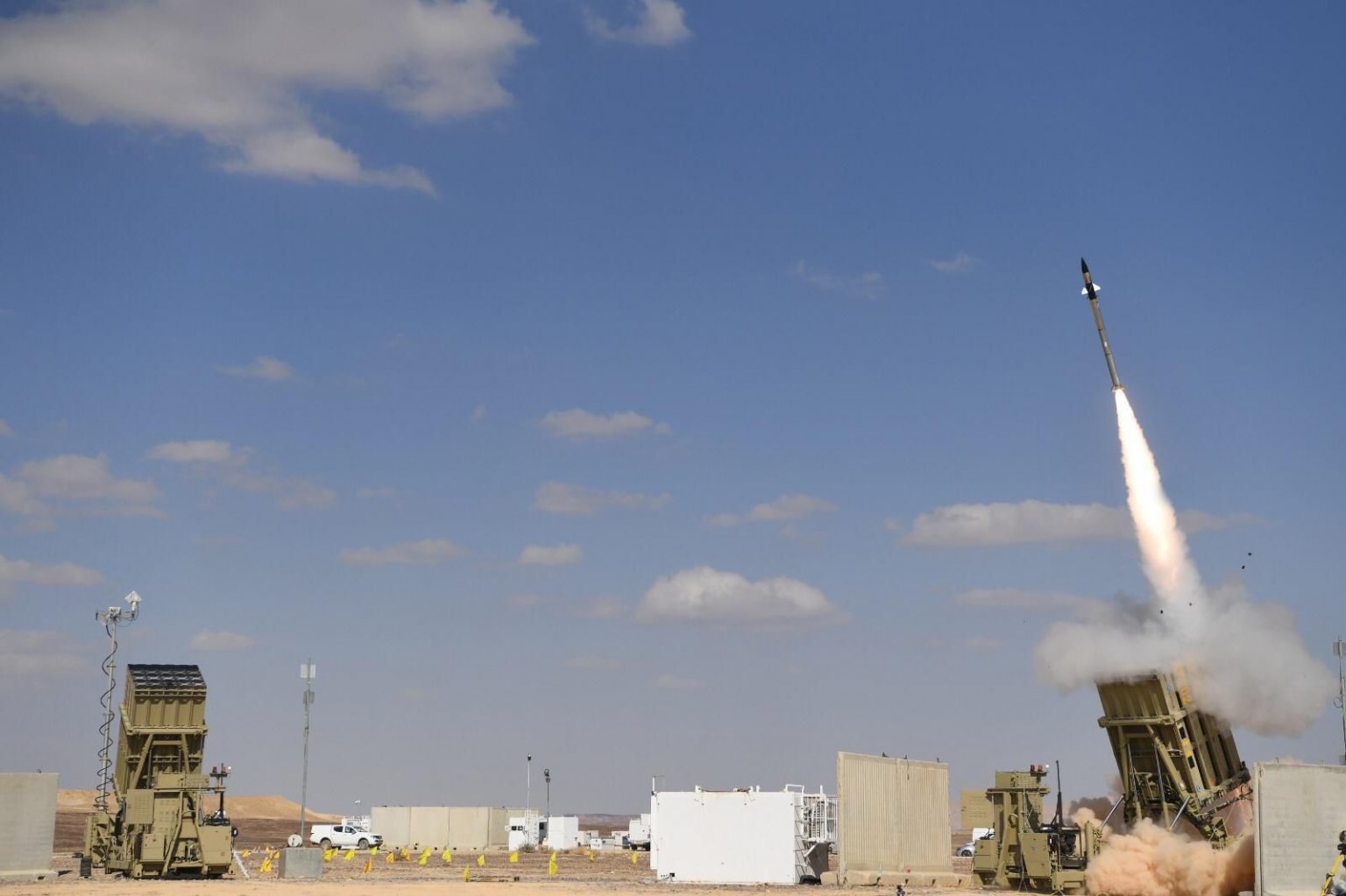As tensions continue to rise in the Middle East and particularly at the Syrian/Israeli border, the Iron Dome is back in the news. Israel has moved more batteries to the northern border in case Syria launches a counter-attack for recent attacks made on weapons intended for use by Hezbollah. How does this amazing technology work?
The concept had been floated around since the 1990s and gained steam in 2004 with the installation of Brigadier General Daniel Gold as the head of the IDF’s research and development bureau. It was initiated by Israel in 2007 and funded by the United States. With the threat of rockets and high-yield artillery shells being fired from multiple directions towards populated areas in Israel, it seemed that counter-strike deterrence was no longer going to be an option. It wasn’t always the governments themselves that Israel had to worry about when it came to attack threats and small groups of armed militants can easily launch rockets without risk of direct retaliation against their unit.
The contract to build Iron Dome was given to Rafael Advanced Defense Systems. They promised that it would be fully operational by 2009. They were first deployed in the spring of 2011 to protect Beersheba and Ashkelon. While it was in use on a few isolated occasions, it was put to its first real test last November when hundreds of rockets were fired by Hamas from Gaza. As many as 90% of the inbound projectiles that would have hit populated areas were shot down by Iron Dome technology.
How it works
The idea is simple but the actual implementation of the technology is unique. The detection and tracking radar system scans for launches from 4-70km away. Once a launch is detected,the data is sent to the battle management and control unit to track the inbound rockets and calculate the trajectory to determine if it’s going to hit a populated area. If not, the Iron Dome ignores it. This is important for conservation of resources on two fronts. First, the system is best used to focus on the highest risk inbound threats as large salvos mean a higher chance of rockets making it through. Second, it’s a financial decision. The system isn’t cheap and each individual rocket represents a large investment.
If the Iron Dome determines that an incoming rocket or artillery shell is a threat to a populated area, the missile firing unit launches an interceptor. Not much is known about the warhead itself other than that it’s designed to stop nearly any conventional projectile and that it uses a proximity fuse to detonate at the last possible moment. This allows for reduced damage to those below due to debris.
The interceptor is a Tamir missile. It is equipped with electro-optic sensors and steering fins to allow for extremely precise maneuverability. Each unit is equipped with 20 interceptors. They operate in all weather conditions and can operate continuously for extended periods of time without maintenance. They have a life cycle of around 15 years.
Here are a few videos that show it in operation:
Rafael and Technion
One of the most intriguing aspects about the continued development of the Iron Dome is the relationship between Rafael and Technion, the Israel Institute of Technology. It isn’t the first time that a school had such a strong connection with a private company, but it is proving to be the type of relationship that can keep the Iron Dome and other defense technologies moving forward with a concentrated focus towards a goal.
This year alone, they company has hired 150 Technion students, Israelis who are concerned about the defense of their country and who have the skills required to keep the technology at a cutting edge level. Here are two videos pertaining to the technology, but the relationship between the two organizations is clear:
Longer ranges needed
There are skeptics. There are those (as seen in the video below) who doubt that the Iron Dome actually works. Even if it does work, there’s another issue. It must acquire the targets at launch, which means that medium- and long-range missiles are still a major concern.
Israel’s enemies in the Middle East are developing better weapons technologies that can someday make the current Iron Dome worthless. More concerning is the threat from outside of the Middle East. Russia in particular has always maintained a strong relationship with its Middle East allies, including Iran. If they were to engage Israel, their weapons would be able to breach the Iron Dome easily. For it to be truly effective against stronger threats, it must be able to operate against projectiles from any range.
This is the biggest threat facing Israel today. They have the backing, the determination, and the technology to keep them mostly safe from their local enemies, but they’ll need more to survive against global threats. As the technology continues to advance, the ranges are expected to increase. Will they be able to protect themselves in time before an attack from more sophisticated foes?






GIPHY App Key not set. Please check settings